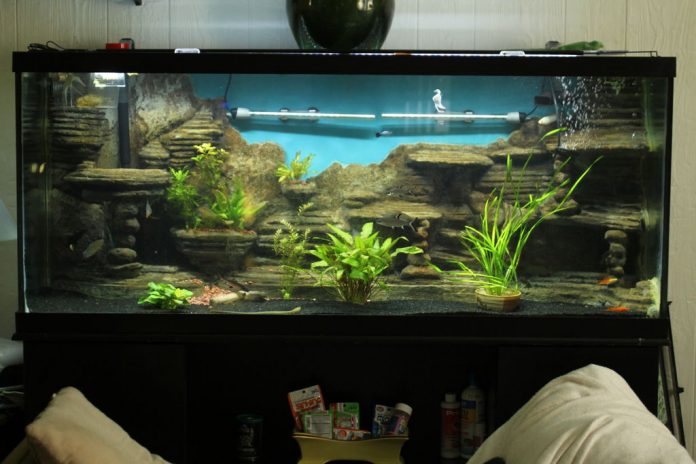Aquarium cements should have three qualities —water resistance, adhesiveness, and elasticity, the latter to allow for the slight movement of the glass and frame due to their different coefficients of expansion. Do not use hard cement, because it is almost impossible to remove, and this will make repairs very difficult.
A good quality cement ready for use immediately is now obtainable in tubes and tins. This will, of course, save a fair amount of time and trouble in mixing your own. The best quality linseed putty is probably the easiest to use. It should be well worked with the hands until quite soft, then liberally pressed into the frame with the fingers, taking particular care to fill the corners.
Related Articles:
-
Important Tips with Marine Aquaria
-
Aquarium Temperature and Heating
-
Aquarium Lighting Tips
-
What To Do If Your Aquarium Is Leaking?
-
Importance of A Good Aquarium Shape
A slightly better cement can be made if you mix two parts red lead, two parts white lead, and one part putty thoroughly, using a small amount of gold-size to unite the whole mass. To mix the leads with the putty use a board to lay them on, and keep kneading the mixture with a broad putty knife.
Other Aquarium Cement Options
Another simple cement is made from equal parts of white lead ground in oil and whiting. The lead and whiting are mixed together with the boiled linseed oil until it reaches the consistency of dough. This mass should then be hung in a muslin bag, much in the same manner as when making cream cheese, and left overnight to set.
The next day it should be kneaded again before using. This particular cement has the virtue of remaining soft and in good condition for a considerable time if kept in an airtight tin, and provides a handy standby in an emergency. The more it is kneaded, the softer it becomes. Should it be necessary to make a quick drying cement, the following formula can be used:
- Whiting 16 parts
- Litharge 4 parts all dry
- Powdered red lead 2 parts
- Powdered resin 2 parts
The ingredients should be mixed together with a good quality varnish to the consistency of a stiff dough. If large areas are to be covered, do not make a large quantity at one time, but make it in small batches as required to prevent the unused cement becoming too hard to work.
Cement containing plaster of Paris should be avoided as it tends to dry rather brittle.













